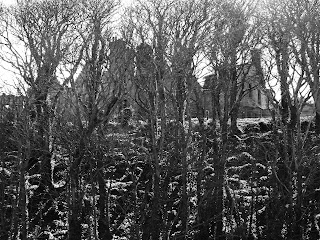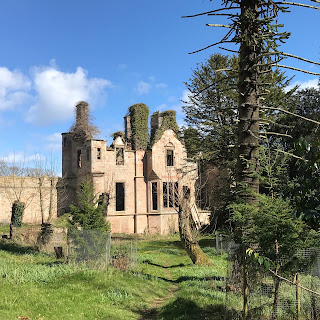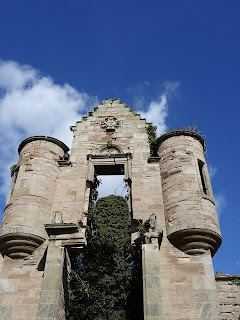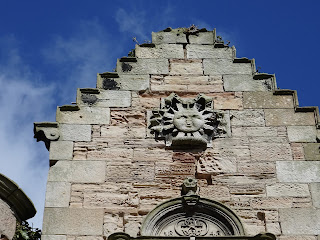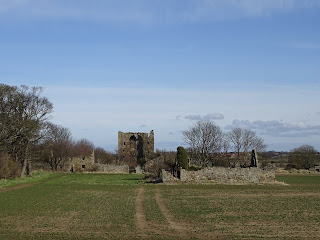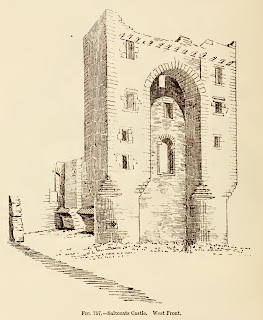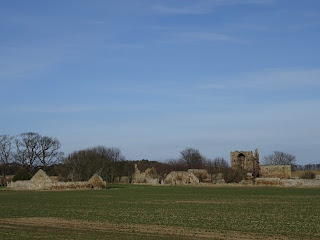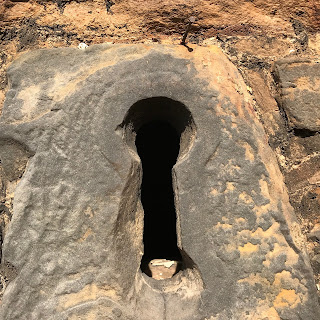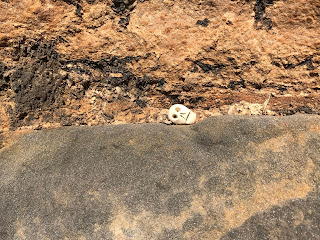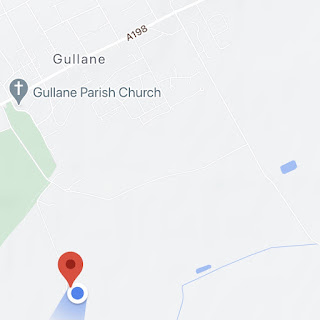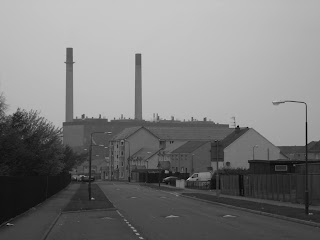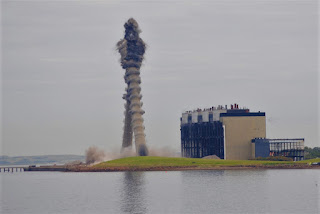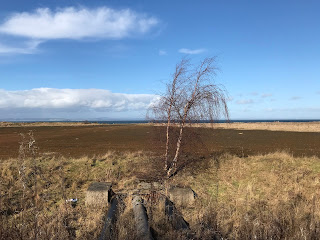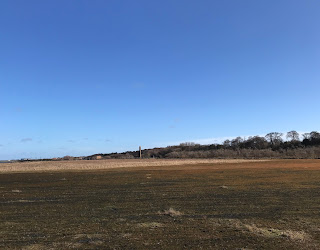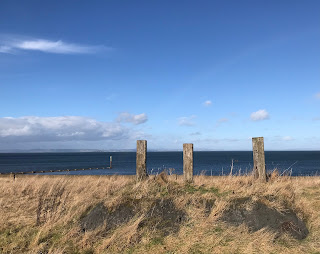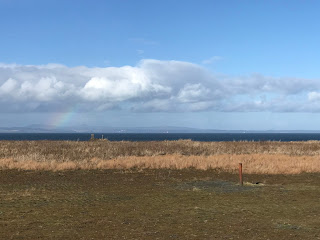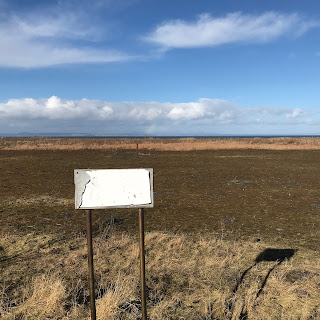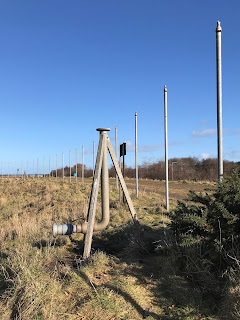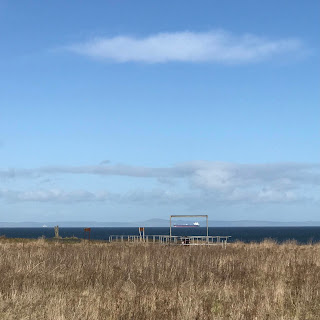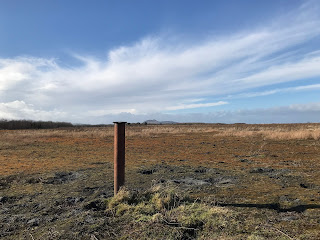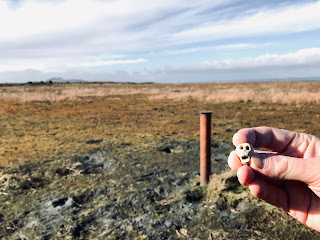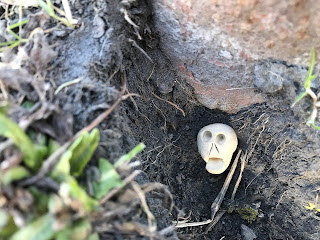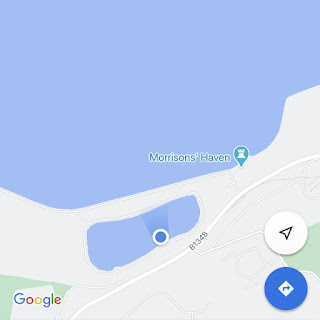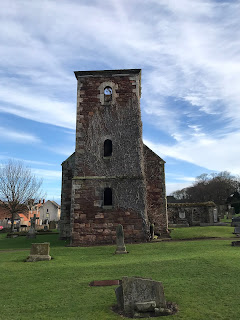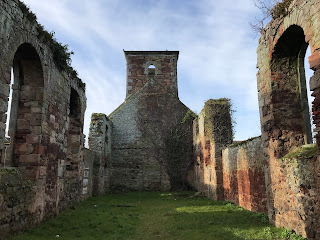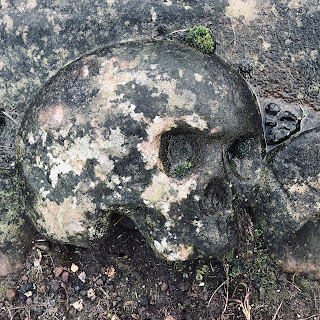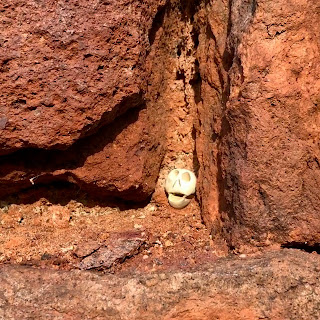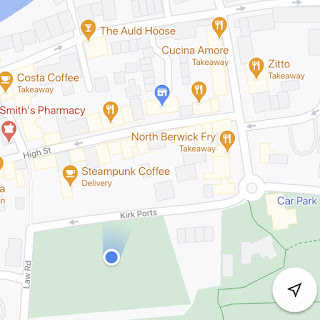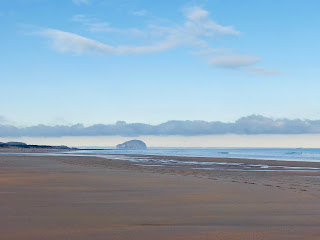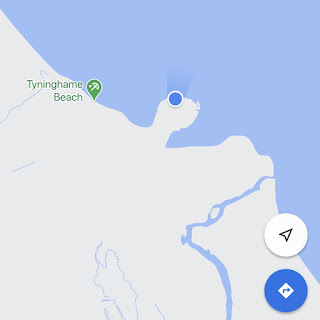If you have ever wandered along Seacliff Beach, you may have noticed the ruins of a gothic looking building that is almost hidden in the trees on the hill above. These ruins are the remains of Seacliff House, a large, private mansion that once boasted having some of the best views out over the Bass Rock and the Forth. Today, while walking to Seacliff Beach I decided to go and have a look around the ruins of the house on the hill.
While wandering
around I found that the ruins were still quite impressive, with much of the
outer walls of the house remaining. I
remember walking through here a few years back and the ruined frontage of the
house was mainly hidden in a mass of trees and undergrowth. Most of this has now been cut back giving a
much clearer view of what remains of the building. There was a speculative scheme drawn up in
1992 to rebuild the house, add an extension and turn it into a spa hotel. Thirty years later and I don’t think that
plan is any further forward, but given the clearing of the trees around the
building who knows…?
The
history of this building is that the original Seacliff House was built in 1750
by Robert Colt. In 1841, the then owner
George Sligo commissioned the architect David Bryce to design a new house
around the earlier building. Bryce
designed a three storey house with an attic in the Scottish Baronial style, and
building work was completed later that year.
The house was then enlarged in 1850 when the estate was acquired by John
Watson Laidlay.
Laidlay
was an interesting chap, one of these classic Victorian gentleman types.
He studied chemistry under Michael Faraday and then went off to work in the
family business out in India. There he ran two factories producing silk
and indigo. In his spare time, he studied various ancient languages and
translated texts by Fa Hian into English (Fa Hian or Faxian was a 4th Century
Chinese Buddhist monk who travelled from China to India visiting sacred
Buddhist sites on his journey). Laidlay returned to the UK in 1849 and bought
the property at Seacliff. On his death
in 1885 his eldest son Andrew Laidlay inherited the property.
Andrew
Laidlay was by all accounts a popular man with many friends. He was a magistrate in East Lothian and a
keen golfer. He was also an avid reader
and researcher and spent many hours in the library of his house. Late on the night of Saturday 27 July 1907 he
was reading in his library. As the house
had no electricity, he read with the aid of a paraffin lamp and would often
have this up on the highest flame to give himself more light to read by. On this night, while reading, Andrew fell
asleep. It then appears that while
sleeping he knocked the lamp over and set fire to the library. Then, in the early hours of the morning on
Sunday 28 July, two of the maids who were sleeping in the room they shared were
woken by a crackling sound and what also sounded like falling furniture. Alarmed by this they got up to wake the housemaid,
Effie Hamilton, who slept in another room.
They woke her and on investigating what was going on she found that
smoke was beginning to billow up from the rooms below. Effie then quickly got the other members of
staff out of the house. Once outside
Effie shouted and threw stones up at the bedroom window of the Laidlay’s
daughter, Theophila. On waking, Theophila
quickly went to her mother’s room and roused her. The two of them then bound some bed sheets
together and climbed from the bedroom window down to a balcony on the second
storey. A ladder was then brought round
so that they could safely get down to the ground and away from the house. In the meantime, Effie had gone back into the
house to try to get to Andrew Laidlay’s bedroom, as she feared he was asleep
there and had been overcome by the smoke from the fire. However, despite a couple of valiant attempts
she was beaten back by the smoke and the heat from the fire. All she and those who had escaped from the
building could then do was watch as it was engulfed by the flames.
The
fire brigade was called and attended, but they had serious problems in getting
any water with which to douse the flames, as there was no mains water connected
to the house, the water being usually drawn from a nearby well. They attempted to use sea water, but this was
fraught with difficulties given the distance from the house to the sea. Most of the house was soon destroyed by the
fire and was left as an empty, smouldering shell. The fire brigade did however manage to stop
the flames from engulfing the kitchen and laundry block. Once the fire was out a search was undertaken
to try and find the remains of Andrew Laidlay, but the heat had been so intense
at the height of the fire that nothing could be found of him.
After
the fire, the ruins of the house were abandoned. The stables and a service cottage for the
house, which had not been damaged by the fire, were purchased by the Royal Navy. During World War I they were used as the base
for HMS Scottish Seacliff. This was a
secret research facility concerned with navigation training and U-boat defence. The stables and the cottage are now privately
owned.
The
Skulferatu that accompanied me on today’s walk was left in the hollow of a
doorway wall.
The coordinates for the location of the
Skulferatu are:
Latitude 56.050131
Longitude -2.631587
I
used the following sources for information on Seacliff House –
John
Watson Laidlay - Wikipedia
Seacliff
House, Seacliff | Buildings at Risk Register
The Scotsman – Monday 29 July
1907
Daily Telegraph and Courier
(London) - Monday 29 July 1907
The Graphic – August 10, 1907
